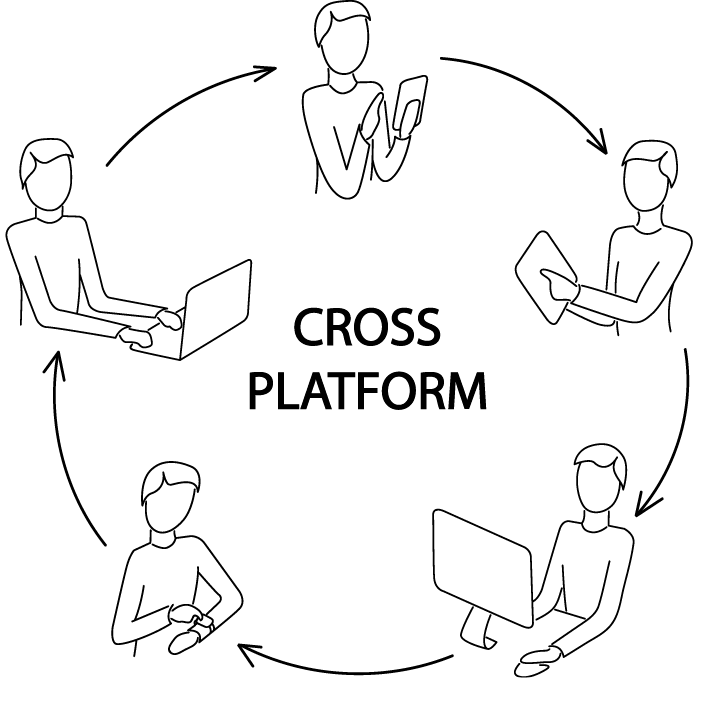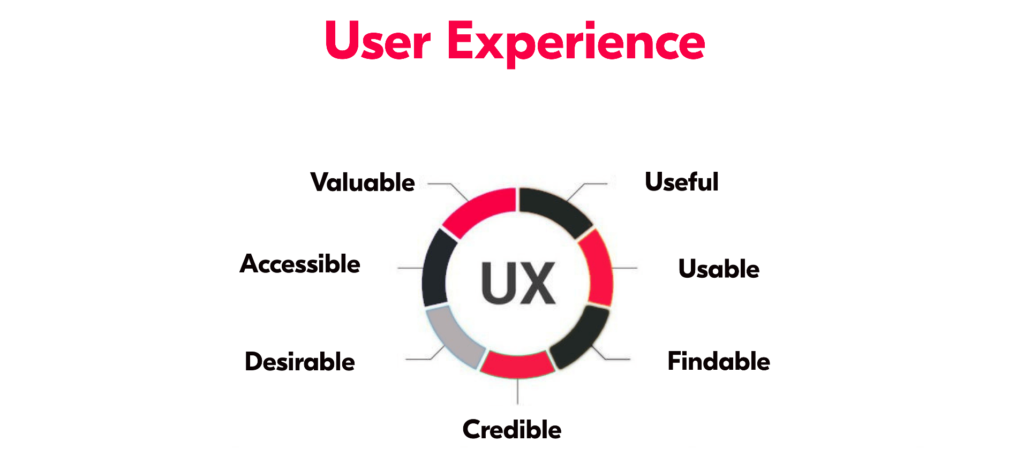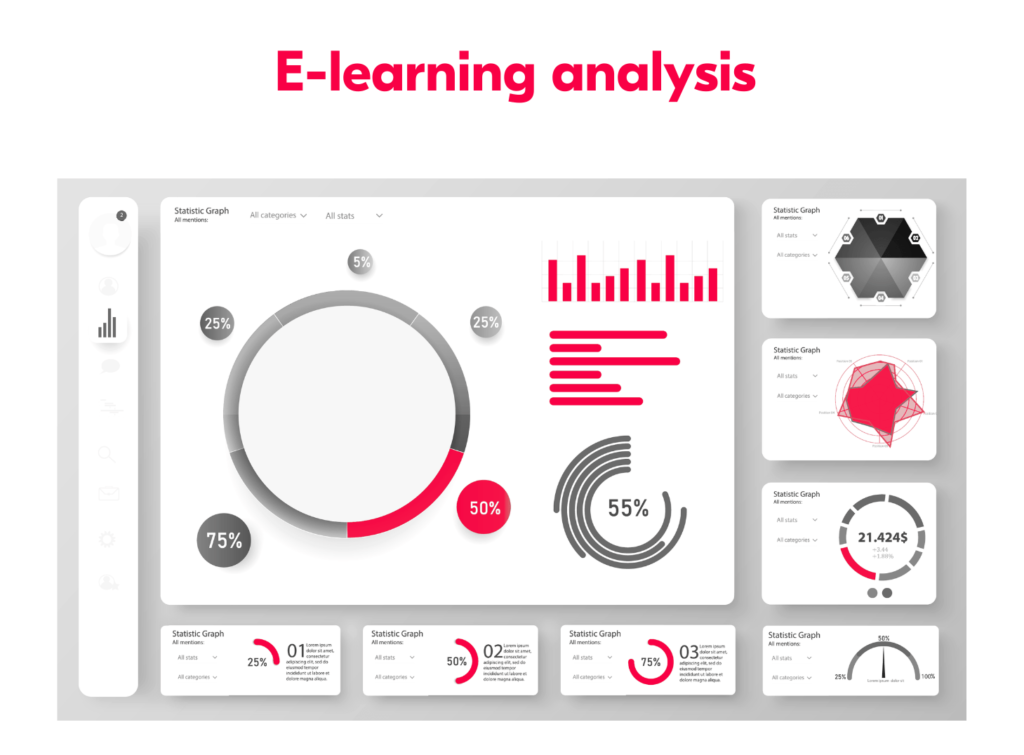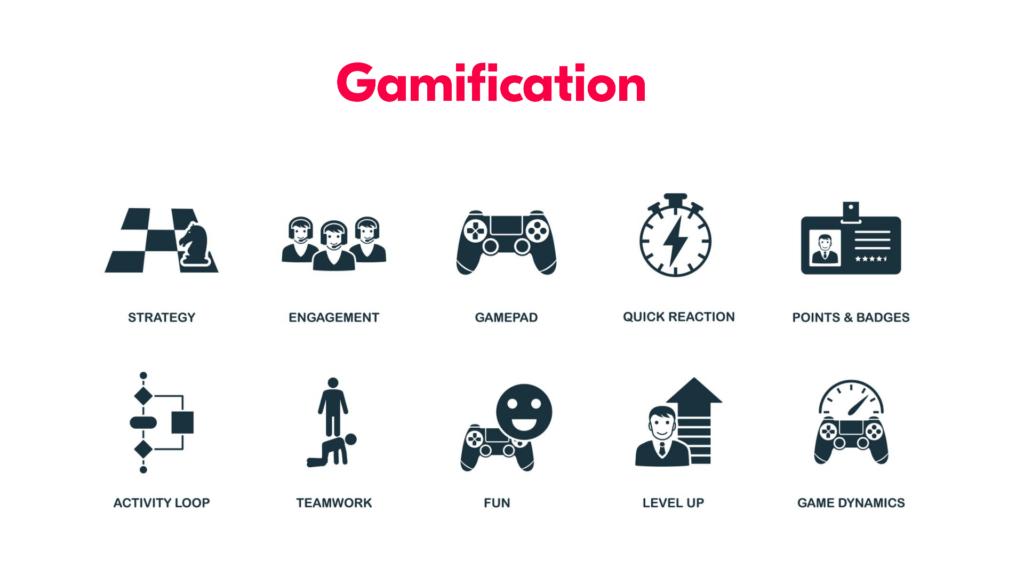As quarantine continues to disrupt our daily lives, schools have gone online and schoolchildren are learning from home in unprecedented numbers. E-learning platforms and are suddenly overwhelmed with the amount of traffic and need quick solutions to keep their services up and continue to improve. While some industries can work remotely, interacting with colleagues, friends, and family has gone virtual. However, online teaching or digital learning in general— and keeping children engaged is the latest challenge.
For many edtech apps, this means a rapid expansion of capabilities to keep up with surging demand. Here are a few of our tips how to improve your online learning app.
How to improve your e-learning platform:
Table of contents:
Technical improvements
Improvement of features
Technical improvements
1. Data security
One major consideration in online teaching is how to protect sensitive data. User credentials, information about payment and personally identifiable information need to be secure also in the learning management system. Users should always have the rights reserved to manage their own data and exclude themselves from data collection at any point.
In e-learning there is all kinds of data, such as confidential personal user information but also public and shared educational materials. Parents need to understand how the online learning platforms use the data. The platform might collect data for pedagogical purposes, for example. Explaining it and being transparent helps all involved parties feel safer. In the European Union, GDPR regulations give a good framework for data protection.
“Like with all applications, we should make sure that the data transmission of the platform is as limited as possible and the data cannot be accessed by any unauthorized party. For example, the Finnish education supervisory bodies have very high standards and require the servers to be kept within the European borders.”
says Bartosz Kuczyński, one of Espeo’s tester for quality assurance
2. Cross-platform
If your learning management system is not cross-platform conform, now is the time to upgrade. Accessibility in class and outside is vital. It’s important that students can log into their accounts on personal laptops but as well on their smartphones to make it easier to view information quickly and from any device. Especially in times like now, when students are only able to complete assignments, go over learned material and prepare for tests from home. Offering the online learning experience from mobile and web is one of the easiest way to reach users and to meet their demands. This also makes sense when thinking about the communication between educators and parents. A mobile app with instant push notifications can help to parents to stay up to date with course content, general administration and data management.

3. Operational reliability
Performance tests ensure operational reliability. These tests simulate typical user activity and can model high traffic times. These can either be general performance tests to indicate the speed of the system’s reaction and therefore sport where improvements are needed or we can undertake stress tests to see how many users can use the app at the same time within the current setup.
When we talk about reliability you have to know current metrics related to your application. It helps you estimate how the potential increase of users may affect the server performance. It’s important to find potential bottlenecks within the e-learning platform. The first step is to gather all data that help to investigate, such as application logs, which includes eros and data traces. Server logs such as the number of requests, the frequency of requests, rush hours, and CPU/RAM use also fall here. Finally, database logs identify slow queries and a number of queries. As logs give you the information about such metrics, it is wise to aggregate them and analyze them.
There are many tools on the market that measure and aggregate these metrics and be ready for critical situations. One of these types of tools is application performance monitoring, or APM.
“Using APM you will be able to identify application weaknesses, find out the most used parts of the application that may be worth improving. Sometimes, changes in a few parts of an application can affect general performance positively.”
said Bartosz Michałak
4. Improve UX
UX research is not just important when launching a new product but also once it’s on the market. In edtech, complex updates often fall in a new semester, when students and teachers are the busiest. If the new release is complicated and confusing, this might cause negative feedback. Involving professionals can help to understand problems and prioritize where to improve first.

Edtech apps can consist of great media traffic, like sharing documents, instant chat, etc. So the UX is also related to the performance of all these kinds of third party layers. We should always be thinking about the complexity of the app. The heavier an app, the more it will affect the UX. For example, lots of animations can drop the frames in mobile in a similar heavier HTML structure can reduce performance on web applications. You can improve the UX by trimming down the amount of data that is transmitted to the bare minimum. Possible other tricks such as caching and offline persistence may be used.
Pro tip:
“I would implement a feedback inquiry, so the users could tell you directly what their needs are. Then I would sort those opinions, categorize and prioritize them for the implementation,”
suggested UX designer, Mateusz Małys
With more users, you might want to consider how it affects the UX and how much it will suffer under the increased strain. From a frontend perspective, content can load gradually, using techniques like lazy loading which is a general rule for all learning platforms, not only edtech. If your e-learning platforms are used in more than one country, you should consider using content delivery network services to serve images and other files. CDN allows you to reduce network latency by using various techniques. For example, when the teacher shares a heavy file to the entire class, a CDN service can cache it and your server won’t need to serve that file anymore.
Improvement of features
“It is hard to tell what modifications are needed. Every client has their own idea of what’s important. From the backend side, it can be simply a general performance improvement. Sometimes the app does not need to be fast or fancy but rather reliable, meaning no server downtimes, strict data protection. We can deliver what the client needs,”
explained edtech developer for tools like TinyApp, Tomasz Maka
Many learning platforms would benefit from interaction options such as live chats, conference calls and video conferencing. But these are also ambitious features and we always need to test how strenuous they would become for the servers, so that it won’t affect the learning experience negatively.
Live classrooms, file sharing, online tutorial, interactive worksheets for students, timed testing systems, various messaging and conferencing options are a few of many possible features.
Below I prepared just a couple of additional features an educational App can benefit from. It does not mean that these are the only or most important features and that everyone learning platform needs to have these. In the end, the sort of features an application should have, depends on what is relevant from a business perspective to the product owner and what problems he wants to solve for teachers, students and parents.
1. E-learning analytics
By collecting data about the activity of a student, e-learning can help deliver insights about the performance and detect fields where improvements are needed and can in turn help with defining the best online trainings. A comprehensive analysis of big data can be valuable for online education and e-learning impact. Teachers can improve instructor effectiveness by tailoring their plans and training paths to individual needs and also share information with parents easier and based on data rather than on simple observations.
Thanks to that, educators can use the data to develop behavior-model algorithms through the use of artificial intelligence (AI) and big data. It ensures that students receive the best possible assistance.

2. In-app chat with fellow students and teachers
One rather basic feature which can have an enormous impact is the option for in-app chats with fellow students. During remote schooling, kids can easily feel isolated and lack contact with fellow students. Enabling students to get in touch with schoolmates and teachers to discuss homework assignments or just chat makes a big difference. Viable options can be the possibility for instant messaging, forums and video conferencing. Besides that, it helps children learn how to navigate as a digital citizen and how to virtually communicate with each other.
3. Gamification
Point scoring, competition, leaderboards — gamification has a wide range of use in e-learning. It’s not surprising that it is an element that is more and more added to learning management systems. Don’t confuse gamification with wasting time. Play is a fundamental principle of early childhood development and it can be easily implemented for e-learning. But when I talk about gamification, I mean a tool for driving motivation.

It is not about online geography puzzles or anything else that simply is just a game and its secondary objective is that kids are learning something while having fun. In fact, it rather means that it is a way to bring a bit more fun into things students normally don’t like to do and in turn to increase their internal motivation. So, the question gamification answers is how to make learning more engaging. It also is a tool to track student’s progress and introduces a competitive spirit as students try to improve their rankings. There are many possibilities on how gamification can look like on an e-learning platform.
Final thoughts on how to improve e-learning platform
When it comes to learning platforms, teachers, students, and parents need one platform for all as a pedagogical assistant.
Whether you’re looking for developers who can help you upgrade your learning platform for the upcoming challenges or would like to create your own applications, our team of edtech experts and developers can help you prepare the best online learning platform. Drop us a line if you’d like to get a free consultation.



